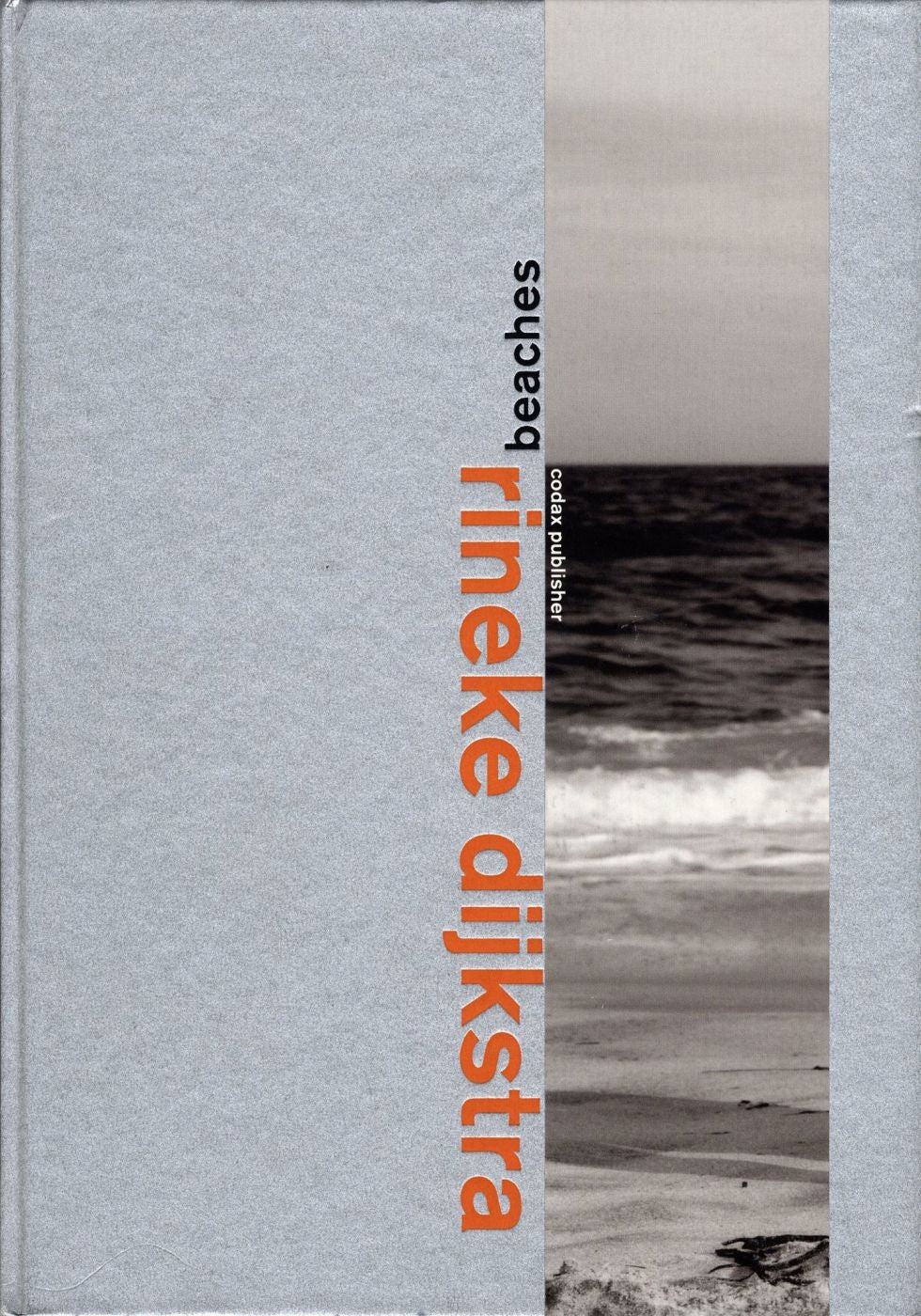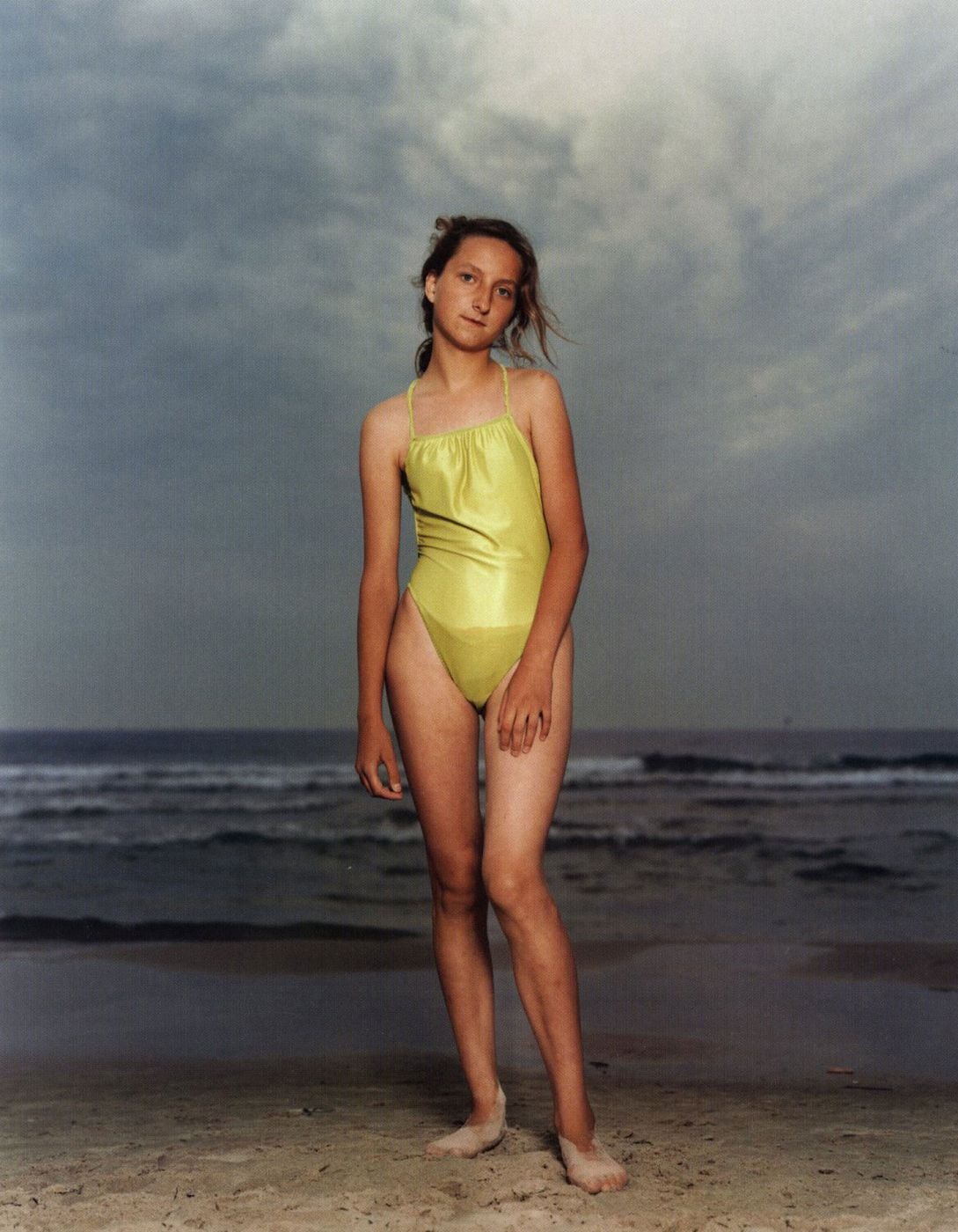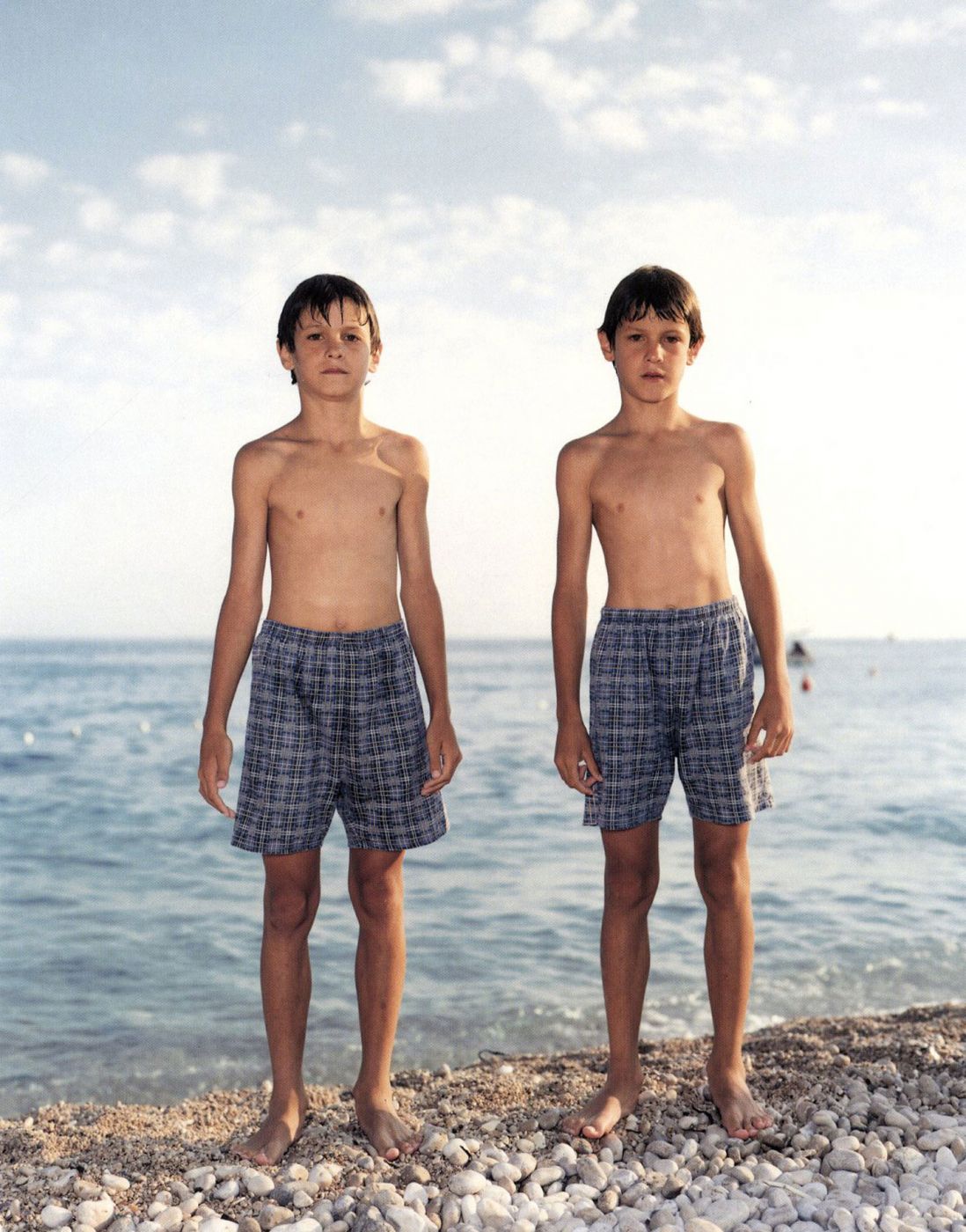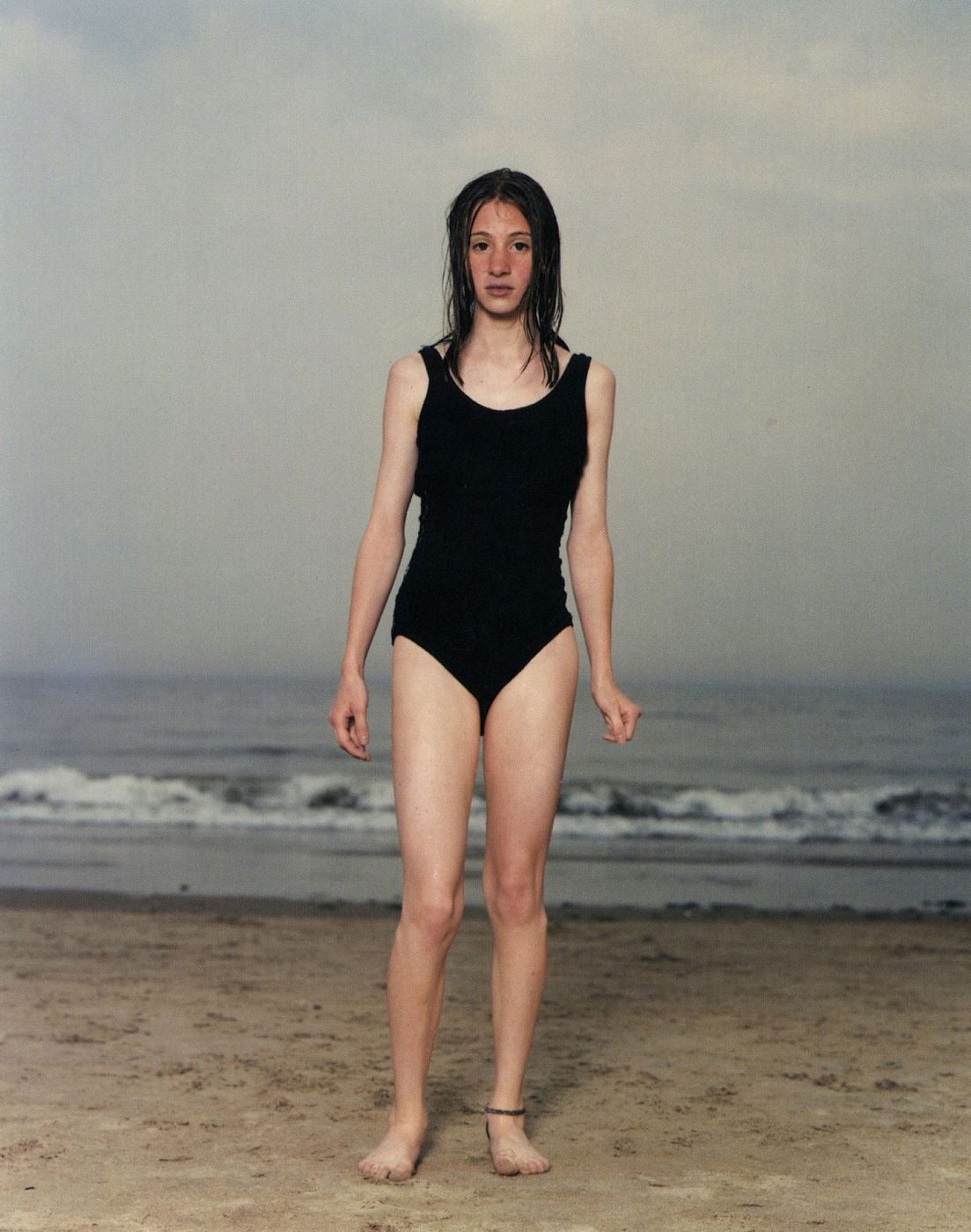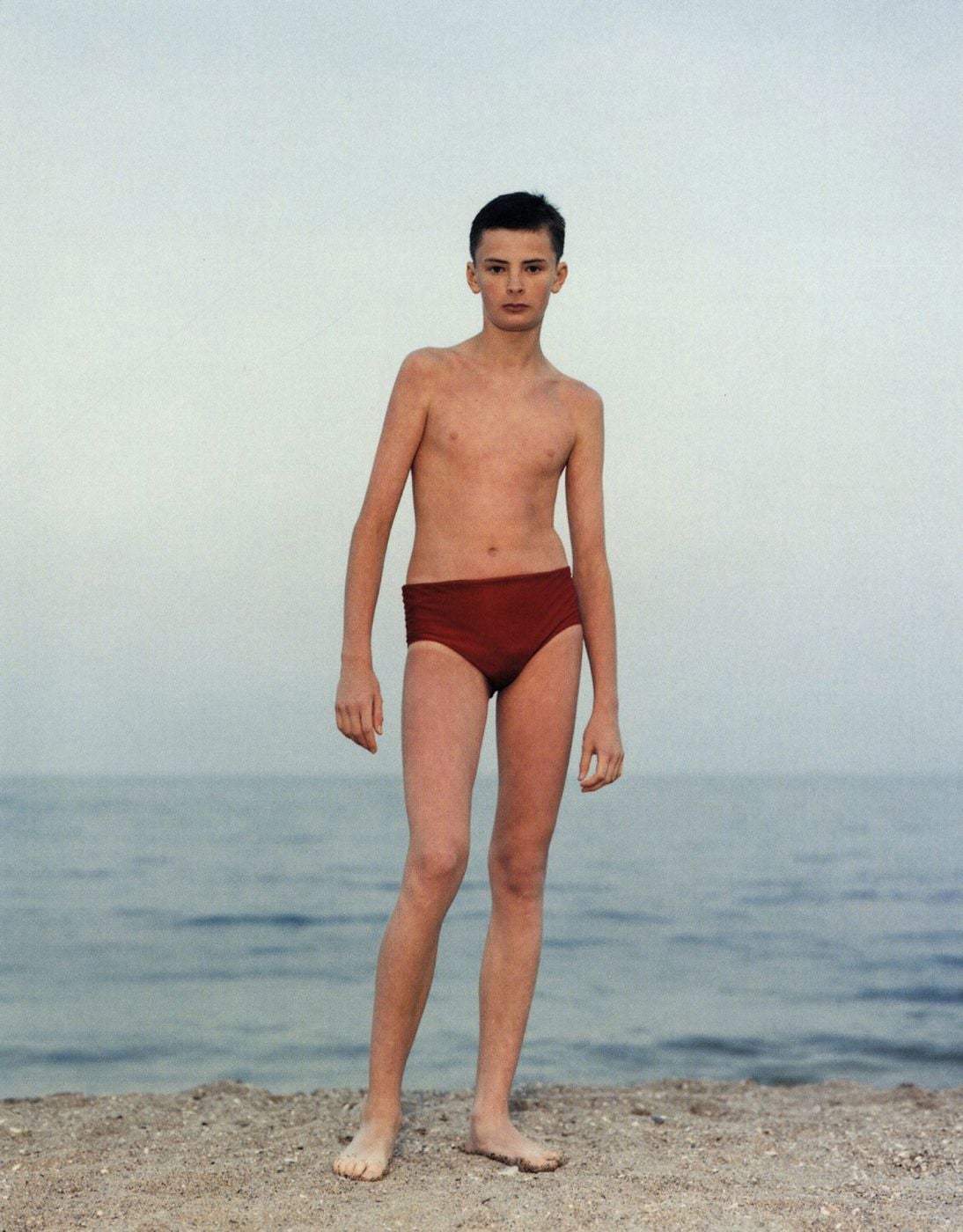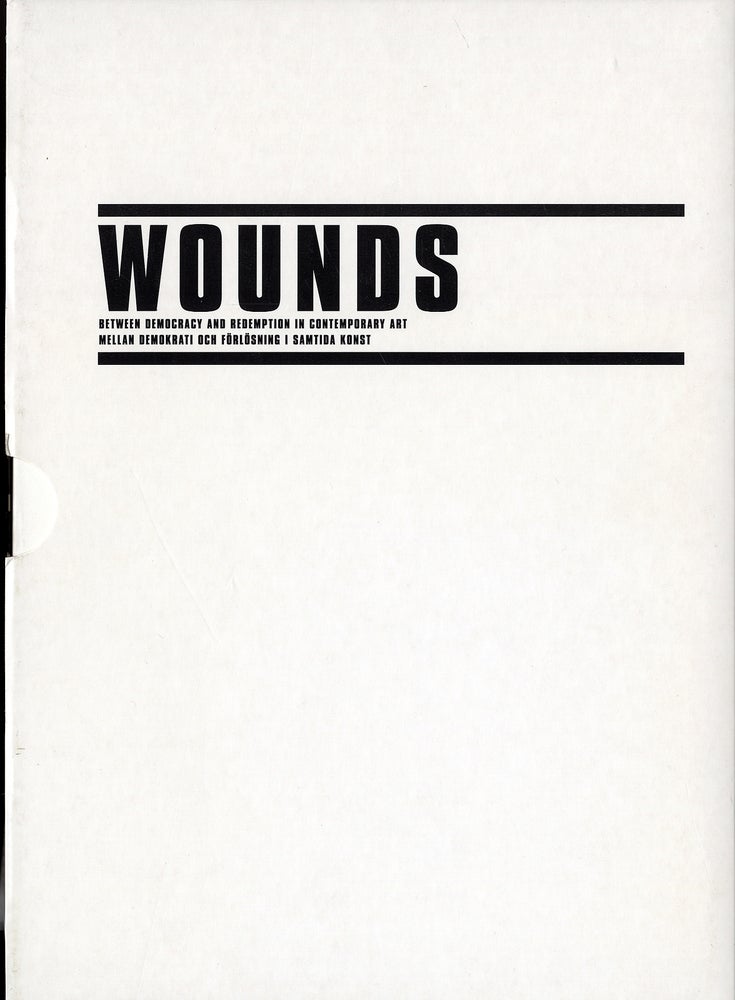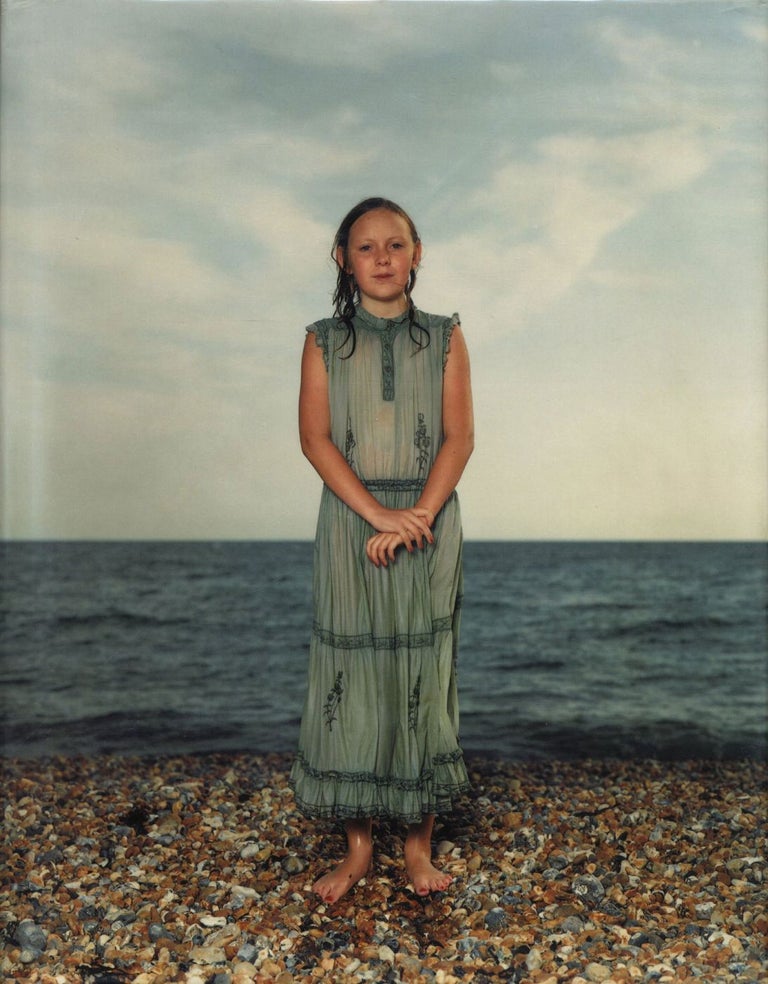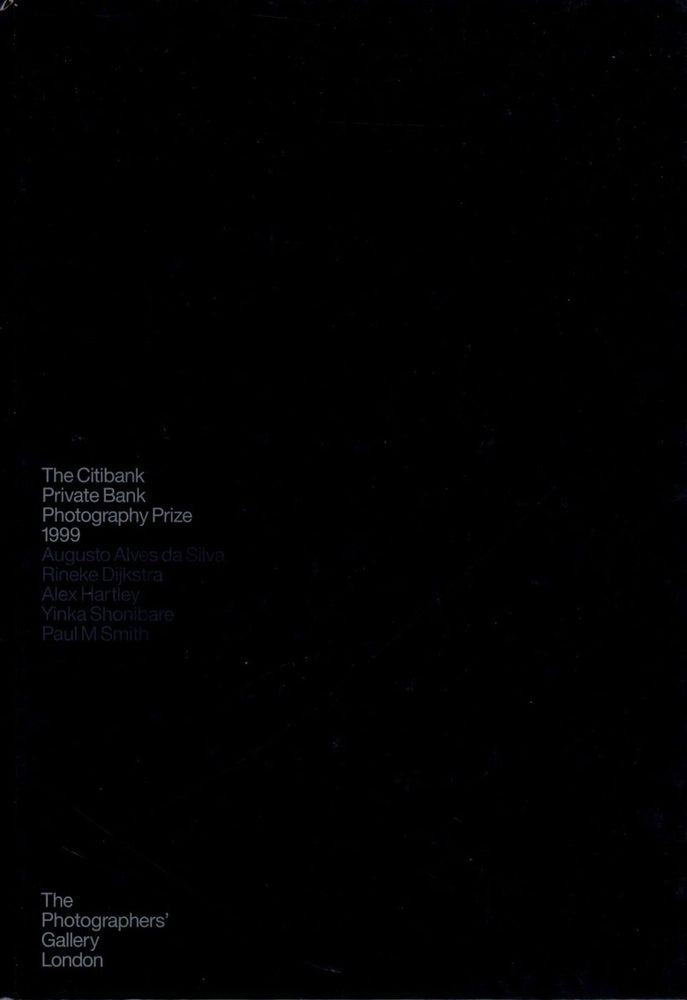Rineke Dijkstra: Beaches
Publisher: Zürich (Zurich): Codax Publisher, 1996
Edition: 1st Edition
Binding: Hardcover
ISBN: 395212270X
Condition: Near Fine / No dust jacket as issued
Item #: 106644
$1,500.00
Specifics
First edition, first printing. Hardcover. Silver paper-covered boards with tipped-in plate and title stamped in orange and black on cover; no dust jacket as issued. Photographs by Rineke Dijkstra. Essay (in German and English) by Birgid Uccia. Includes a list of plates, a biography, exhibition history, bibliography and awards. Designed by Weiersmüller Bosshard Grüninger. 56 pp., with 18 four-color plates finely printed on heavy matte paper. 13-5/8 x 9-5/8 inches.
[Cited in Martin Parr and Gerry Badger, The Photobook: A History, Volume II. (London and New York: Phaidon, 2006).]
Condition
Near Fine (moderate surface wear, some smudging on the blank page opposite one plate [not affecting plate], else Fine).
Description
Rineke Dijkstra might be the most important photographer of portraits alive today. She channels August Sander through her own poet-soul photographing youth with brutal, unyielding generosity. Her people emerge from beaches, hospital rooms, indefinable space, to haunt us with their imperfect beauty and their fierce necessity of existence. These photographs heroicize individuals in a brazen way. Dijkstra isn't content with confirming that banality is truth. She gives us the truth of fiction, the theatrics of the psychological complexity. She lets us way, way inside. The smudged blood on the collar of a bullfighter is in dialogue with the thin stream of blood running down a new mother's leg as she clutches her hours-old infant with an uncertainty that is astonishing.
From Rineke Dijkstra: "In the end, it's the individual that I'm after."
From Parr and Badger: "When they first appeared in the 1990s, the portraits by the Dutch artist Rineke Dijkstra caused more of a stir than any comparable imagery since Diane Arbus. Her first collection in particular, published as Beaches in this important photobook, resonated with her audience in a number of ways. The images related to the work of both Arbus and August Sander, two impeccable precedents, yet displayed an authoritative voice of their own. Their subject matter, adolescents in bathing suits, was edgy, but was handled by Dijkstra with sensitivity. Furthermore, the rigor of her presentation demonstrated an intellectual clarity and ambition that was enough to announce a major new voice in portraiture, possibly the trickiest of photographic genres to bring off successfully."


